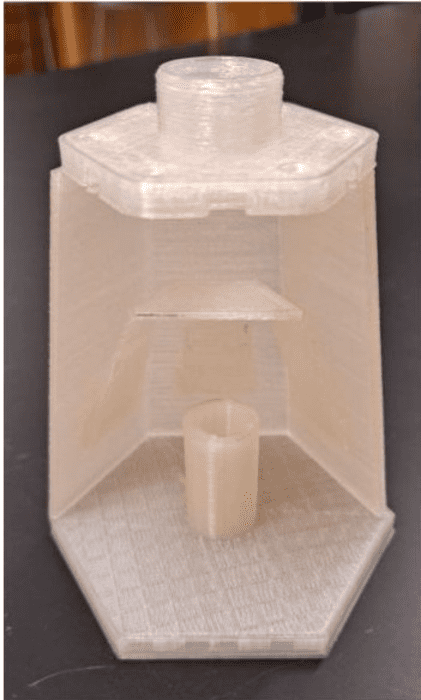Highschoolers at Barrie Middle and Upper School in Silver Spring, USA, are tackling the issue of lead pollution in drinking water. They have designed a cheap, reusable cartridge filter that removes this toxic heavy metal from tap water, and warns when the chemical cartridges it uses need to be refreshed.

The issues people have been having with drinking water fed through lead piping are already well known. The plight of people in Flint, Michigan, is one tragic example. Lead exposure from drinking water can lead to a host of medical issues, ranging from cardiovascular complications to cognitive and reproductive problems.
High schoolers have now joined the efforts to protect people from this toxic metal by designing a simple device that can scrub it out of tapwater.
Home-printed filters
“A few years ago, I saw a video of a woman in Michigan turn on her tap water, and it came out brown,” says Rebecca Bushway, a Science Teacher at Barrie and the project’s principal investigator. “That made me think — because there’s really no safe level of lead in drinking water, wouldn’t it be nice to have a water filter that could tell you that your water is contaminated, well before it turns brown because of lead?”
Lead has historically been the metal of choice for piping, due to its ease of processing and apparent resistance to water. In fact, it has been in use for this role since the times of the Roman Empire. The metal and the use were so tightly intertwined that, to this day, we inherit the title of ‘plumber’ from the Latin word for ‘lead’: plumbum.
Many homeowners in the U.S. have switched their plumbing from lead pipes to safer options, but millions of homes still retain their old piping. This is especially true for residences in lower-income, less affluent areas, whose inhabitants often cannot afford the major cost of such an undertaking. This leaves countless families around the country — and the world at large — exposed to harmful lead contamination in their water.
Lead contamination of drinking water occurs in areas where the water has high acidity or low mineral content, or where demand is high, increasing the flow of water in the pipes. These factors can cause lead to dissolve or flake off into the water, respectively, leading to a dark tinge or visible particles in the liquid.
In a bid to help keep them safe, pupils at the Barrie Middle and Upper School have designed an inexpensive filter to scrub lead out of drinking water. This is a cheap-to-produce faucet attachment that comes with a replaceable cartridge containing the actual filtering material — unlike other commercially-available filters, which are a one-and-done deal. The cartridge is made of biodegradable plastic and even tells the user when it needs to be replaced by turning the tap water yellow.
The filter is much cheaper to produce and install, as well as being much more compact than, currently available filters. The students also consider its ability to show that the filter cartridge is spent and should be refreshed a great improvement over current systems, as it helps warn users when the water flowing out of their tap may not be safe to use.
The project started then Bushway asked her upper-level high school chemistry class if they thought they could make a filter similar to the ones used for camping using inexpensive components to remove lead from water. The students started work on the project in 2020 as a way to keep up with schoolwork during the COVID-19 pandemic. Most of the work up until 2021 was performed virtually and focused on designing the attachment that would connect the filter to a faucet. After returning to the classroom, they started work on 3D-printing the cartridge housings (which measures 3 inches / 9 cm in height), and fill them with a mix of calcium phosphate and potassium iodide powder.
“Calcium phosphate first binds with dissolved lead in water to form lead phosphate and free calcium. The calcium, which is harmless, ends up in the water, and the lead phosphate stays in the filter,” explains Bushway.
The final product, lead phosphate, is an inert solid and remains trapped in the filter by a nylon screen affixed to its bottom. After the calcium in the cartridge is spent, lead remaining in the water now reacts with the potassium iodide, causing the water to turn yellow.
In the future, the pupils aim to add a small spectrometer with a single-wavelength LED to the bottom of the cartridge. This device will check for the presence of lead in the water and alert the user even before the yellow color is detectable to a human eye. Their final aim is to make the filters cost under $1 each.
“Ultimately, this experience has shown students that they can make a difference to somebody, and there are problems that they can fix with science,” Bushway says.
This research was presented at the American Chemical Society (ACS) Spring 2022 meeting, with highlights of the presentation to be uploaded to ACS’s Youtube page.


